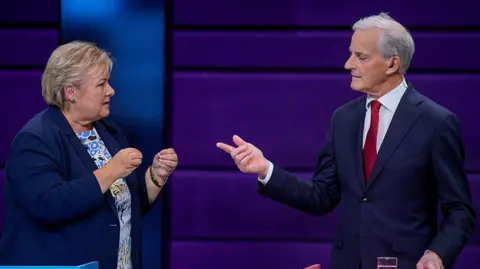In what could be a historic election for Japan, Sohei Kamiya, leader of the newly established right-wing political party Sanseito, has ignited a populist movement resonating with a younger demographic disillusioned with traditional politics. Thousands gathered at Takasaki Station in Gunma Prefecture to hear his animated speeches, as he rallied support for a vision he brands “Japanese First.” This cry echoes sentiments familiar to listeners in the United States and parts of Europe, highlighting fears of globalism, foreign influence, and rising costs of living.
Kamiya has been characterized as xenophobic by critics, who argue that his rhetoric scapegoats Japan’s increasing foreign population in response to economic frustrations. Despite backlash, his message appears to resonate, with polls indicating Sanseito could secure third place in Japan's Upper House elections—a notable accomplishment for a party less than five years old.
Drawing inspiration from former U.S. President Donald Trump, Kamiya champions a nationalistic agenda focused on prioritizing Japanese citizens above all else. Political analysts have recognized this election as potentially transformative, as the emergence of Sanseito reflects a growing desire among the youth for alternatives to the established order led by the long-dominant Liberal Democratic Party (LDP). With dissent towards the LDP escalating, particularly following the assassination of former Prime Minister Shinzo Abe, Sanseito’s rise may symbolize a broader ideological shift.
Sanseito’s appeal is particularly strong among young people, who are expressing their concerns about economic stagnation, rising living costs, and the implications of increasing foreign workers filling vacancies left by the declining native workforce. The number of foreign residents in Japan surged to 3.8 million last year, igniting tensions around immigration and national identity.
Kamiya’s rallies frequently highlight issues such as rising prices of staples in contrast to stagnant wages, and the perceived injustices of the current tax system, further fueling his party’s popularity. His focus on national issues resonates with crowds, particularly since he positions his party as an advocate for the younger population.
He has distanced himself from the LDP, promoting a grassroots funding model instead of relying on large donors, which has fostered community engagement. The party's recent electoral success—including gaining one seat after attracting a defecting lawmaker—demonstrates a growing base of support and determination to remain a player in Japan's political arena.
As general sentiment shifts, with public frustrations regarding governance becoming palpable, Kamiya boldly claims, “If we fail to resist this foreign pressure, Japan will become a colony.” His ambition for Sanseito is clear—he aims to cultivate a movement reminiscent of Trump’s “America First,” albeit with a distinctly Japanese approach. As the elections approach, all eyes will be on Japan to see if this new wave of populism can indeed reshape its political landscape.
Kamiya has been characterized as xenophobic by critics, who argue that his rhetoric scapegoats Japan’s increasing foreign population in response to economic frustrations. Despite backlash, his message appears to resonate, with polls indicating Sanseito could secure third place in Japan's Upper House elections—a notable accomplishment for a party less than five years old.
Drawing inspiration from former U.S. President Donald Trump, Kamiya champions a nationalistic agenda focused on prioritizing Japanese citizens above all else. Political analysts have recognized this election as potentially transformative, as the emergence of Sanseito reflects a growing desire among the youth for alternatives to the established order led by the long-dominant Liberal Democratic Party (LDP). With dissent towards the LDP escalating, particularly following the assassination of former Prime Minister Shinzo Abe, Sanseito’s rise may symbolize a broader ideological shift.
Sanseito’s appeal is particularly strong among young people, who are expressing their concerns about economic stagnation, rising living costs, and the implications of increasing foreign workers filling vacancies left by the declining native workforce. The number of foreign residents in Japan surged to 3.8 million last year, igniting tensions around immigration and national identity.
Kamiya’s rallies frequently highlight issues such as rising prices of staples in contrast to stagnant wages, and the perceived injustices of the current tax system, further fueling his party’s popularity. His focus on national issues resonates with crowds, particularly since he positions his party as an advocate for the younger population.
He has distanced himself from the LDP, promoting a grassroots funding model instead of relying on large donors, which has fostered community engagement. The party's recent electoral success—including gaining one seat after attracting a defecting lawmaker—demonstrates a growing base of support and determination to remain a player in Japan's political arena.
As general sentiment shifts, with public frustrations regarding governance becoming palpable, Kamiya boldly claims, “If we fail to resist this foreign pressure, Japan will become a colony.” His ambition for Sanseito is clear—he aims to cultivate a movement reminiscent of Trump’s “America First,” albeit with a distinctly Japanese approach. As the elections approach, all eyes will be on Japan to see if this new wave of populism can indeed reshape its political landscape.





















